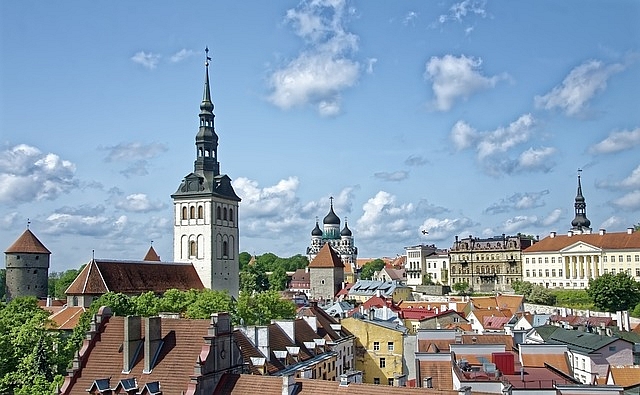Estonia registers slowest growth since economic crisis
Baltic economic overview - Estonia
Important economic figure forecasts for 2017
GDP growth: 2.6%
Unemployment: 8.2%
Inflation: 3%
Doing Business 2017 ranking – 12th
Sources: Bank of Estonia, World Bank
Estonia, seen as an excellent example of a balanced economy, has been stagnating the past several years. Last year was no different, as economic growth was projected at over 2%, but in reality was below 2%. Despite the slow growth, Estonia remains an attractive country, which has been noticed by the World Bank in its annual Doing Business 2017 ranking, as it has jumped up to 12th place amongst 189 countries around the world.
Very slow growth
Experts from the Estonian central bank already at the end of 2016 admitted that Estonia’s economic growth is the slowest since the economic crisis. This was mostly due to a reduction in demand from Estonia’s trade partners, which in turn lessened the growth potential of the country’s manufacturing industry and exports. The main reason for weak growth in 2016 was problems in certain sectors – difficulties in the shale oil and energy sectors, as well as a reduction in added value. At the same time, Estonia has also been impacted by a reduction in investments in recent years, which will leave a long-term impact on the national economy.
Improvements in job market expected
Speaking about the certain sectors where slower growth has been observed, these are ones with substantial capital, like, for example, mining, energy, transport and real-estate. These sectors also contribute little in facilitating employment. However, an increase in demand for workers was also observed, which in turn contributed to an increase in the average salary. Experts point out to positive trends in the job market, which has become more active and the situation is likely to continue to improve. The country’s aim to get more unemployed persons involved in the job market, will, most likely, bear fruit, as the matter on lower paid jobs, where there is a substantial lack of workers, is being dealt with at the moment. At the same time, experts predict that costs associated with the workforce will reduce in the near future, taking into account the limited possibilities within the business sector.
Estonian companies, just like companies in the other Baltic countries, will have to be more active in thinking of ways to improve their competitiveness, with the aim of ensuring faster growth. Overall competitiveness figures in 2016 did not worsen despite the rapid increase in wages. This also left a positive impact on export figures of Estonian goods with high added value. Experts point out that economic growth did not weaken due to internal demand, but due to weak export opportunities. This is why the Estonian government and local companies must work actively to make sure that the state’s economic structure becomes more favorable for exports. Some economic experts are even warning state officials against huge investments in the construction sector, which would in turn expose this sector to overheating risks, just like ten years ago.
Priority sectors
* The Estonian Economy Ministry has created the "Estonian Business Growth Strategy 2014-2020", which aims to increase the productivity of Estonian business to 80% of the European Union’s average level. The strategy foresees the creation of export-capable products with high added value, as well as innovative services. In order for the successful implementation of this strategy, the Economics Ministry and Transport Ministry submit a plan of action each year to the government.
* Estonia’s key industrial areas are located in Tallinn and its environs, as well as in the northeast of the country. The largest employers in Estonia are companies operating in the textile and paper industries, as well as those producing timber products.
* Estonia has a well-developed rail cargo connection with Russia, and is connected with Scandinavia by sea transport. In terms of cargo turnover, the Port of Tallinn is the third largest in the Baltics, behind only the ports of Riga and Klaipēda.
* Valuable deposits of oil shale are located in the northeastern part of Estonia, in an area covering several thousand square kilometers. Oil shale is used to produce electric energy, as well as fuel. It is possible to extract gas from oil shale, as well as various types of chemicals used to produce mineral fertilizers and construction materials. Phosphorites are also found in Estonia, which are used to produce mineral fertilizer. Estonia also has deposits of limestone and dolomite, as well as peat, gravel and clay. Recently, Estonia has begun to pay considerable attention to alternative energy sources – water, wind and peat.
* Estonia has put forward several priority sectors: information and communication technology, transportation and logistics, electronics, engineering, food production, business service sector, as well as the wood processing industry. The Estonian government puts special emphasis on the IT and start-up sectors.
Risk factors
* One of the main risk factors in Estonia, just like in Latvia and Lithuania, remains exports, which has continued to grow the past several years, but very slowly. Due to the EU sanctions imposed on Russia, Estonia must also look for ways to compensate the lost export share to Russia.
* Experts point out that the most important internal risk in Estonia is still related to the job market, which is impacted by the reduction of the active workforce, as well as a relatively high structural unemployment level.





